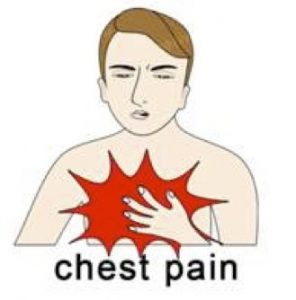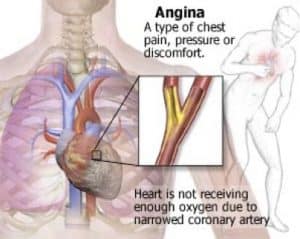Every one of us, at a certain point, experiences or will experience chest pain. Although chest pain may exist just for a couple of minutes and then disappear, it could, however, be dangerous and a serious detriment to our health.

There are several causes why chest pain exists, and it is important for us to distinguish between each of the causes so as to avoid any chest pain issues.
To name but a few, here are some of the major causes of chest pain:
1. Heart attack or myocardial infarction causes
Heart attacks are a common cause of chest pain and are usually experienced by those in middle-age. They are caused by a reduction in blood flow through the heart blood vessels, causing the cells of the heart muscle to die.
Although heart attacks are sometimes similar to another cause of chest pain, angina, heart attacks are usually more severe and cannot be relieved by rest.
There are certain risk factors one should avoid to prevent heart attacks, such as high cholesterol, smoking, diabetes, high blood pressure, obesity, usage of dangerous drugs, etc.
2. Angina causes

Another severe cause of chest pain is Angina or Pectoris Angina. Angina is severe pain experienced in the chest area and caused by the blockage of the heart blood vessels which reduces the oxygen and blood flow to the heart.
It may not cause permanent damage to the heart, it may, however, spread a pressure, or squeezing sensation of pain to your arm, shoulder, jaw,, or back. It can be triggered by emotional stress, heart disorders or too much physical exertion.
Unlike a heart attack, Angina can be relieved by rest.
3. Esophagus related causes
Esophagus-related causes of chest pain usually originate from esophageal spasm, acid reflux or GERD, or esophagitis. All of these are caused by different factors but result in the same severe discomfort to our body which is chest pain.
The esophageal spasm is caused by uncoordinated and excessive contractions of the smooth muscle of the esophagus. This spasm usually takes place when you are swallowing a very hot or very cold fluid or suffering emotional upset.
Esophagitis is when the body acquires fungi, viruses, bacteria, yeast, or irritation from medication, creating complications for the body and the feeling of chest pain.
The final cause of severe chest pain is acid reflux (commonly known as GERD) and can originate from various factors. Factors that may decrease the pressure on the lower part of the esophagus, prolong the emptying of the stomach or reduce movement of the esophagus. These factors include excessive intake of caffeine, nicotine, and alcohol, overconsumption of high-fat foods, and diabetes or scleroderma.
4. Spontaneous pneumothorax causes
Spontaneous pneumothorax, or collapsed lung, takes place when the collection of gas and air in the space between the chest and the lungs collapses, preventing it from inflating completely.
It usually occurs when the sac that contains the lung and the outside atmosphere loses its pressure balance and gets disrupted.
There are several causes of a collapsed lung, usually resulting from injury or trauma to the chest, including a bad fall, gunshot wound, stabbing, car crash, or even during surgery.
Also, there are risk factors one should consider for pneumothorax, such as emphysema, severe asthma, cancer, aids-related pneumonia, and prohibited drug use.
5. Perforated viscus causes
A perforated viscus occurs when an organ, usually in the abdomen, such as the intestines spleen, stomach, gallbladder, or bladder, becomes torn or perforated. Problems occur when waste material, stored in these vital organs, spills out into the body cavity with life-threatening consequences
A perforated viscus can be experienced for a number of reasons, including trauma to the abdomen, infection or disease, ulcers or ruptured cysts, or even abdominal obstruction.
Symptoms range from fairly mild to more severe, and include chest pain, abdominal pain, stiffness, fever, and nausea.
